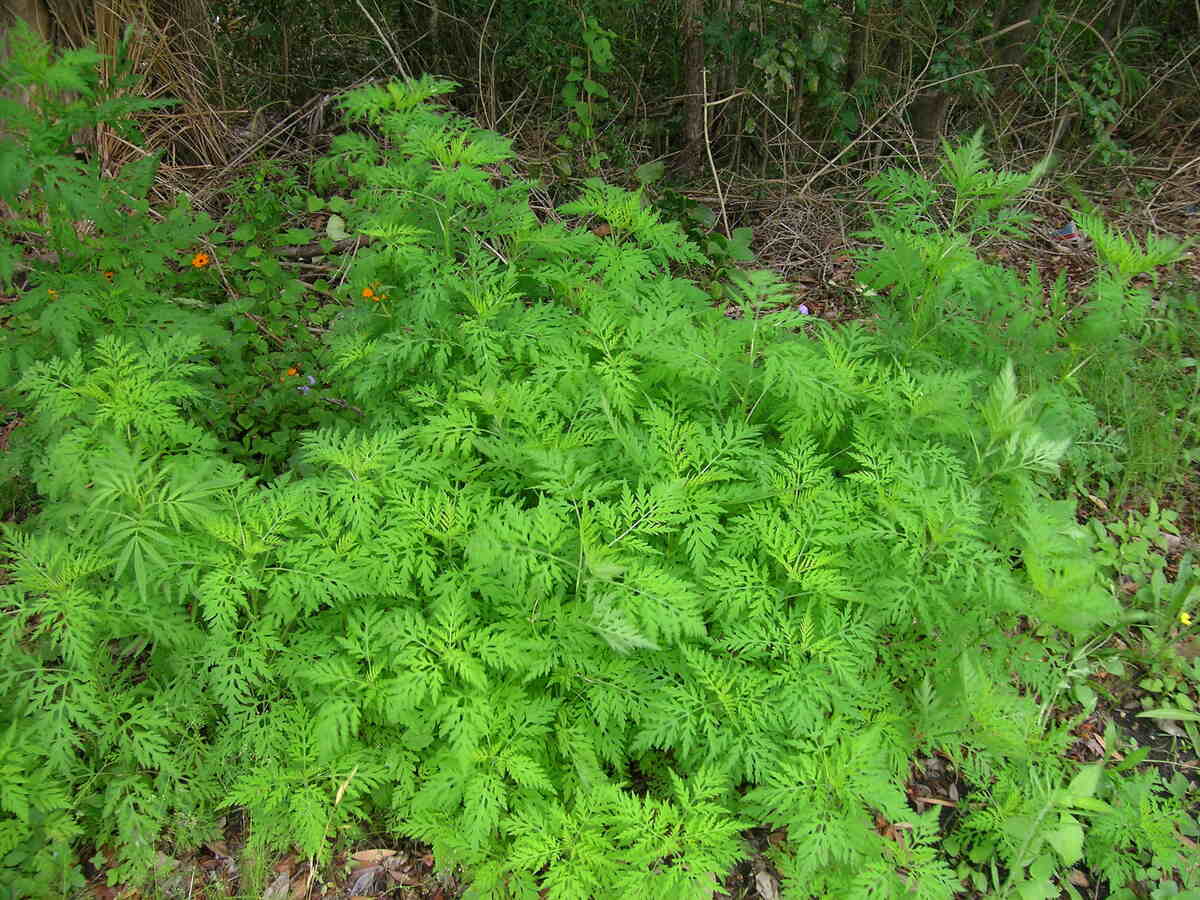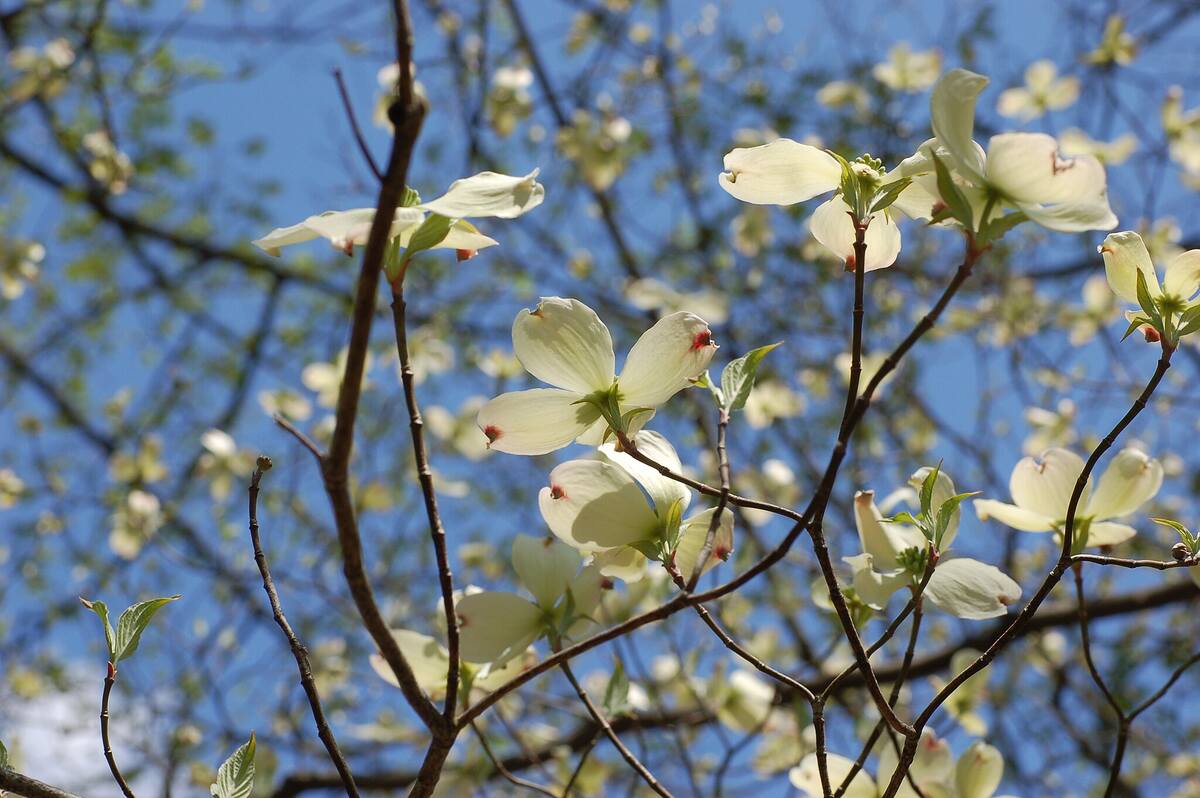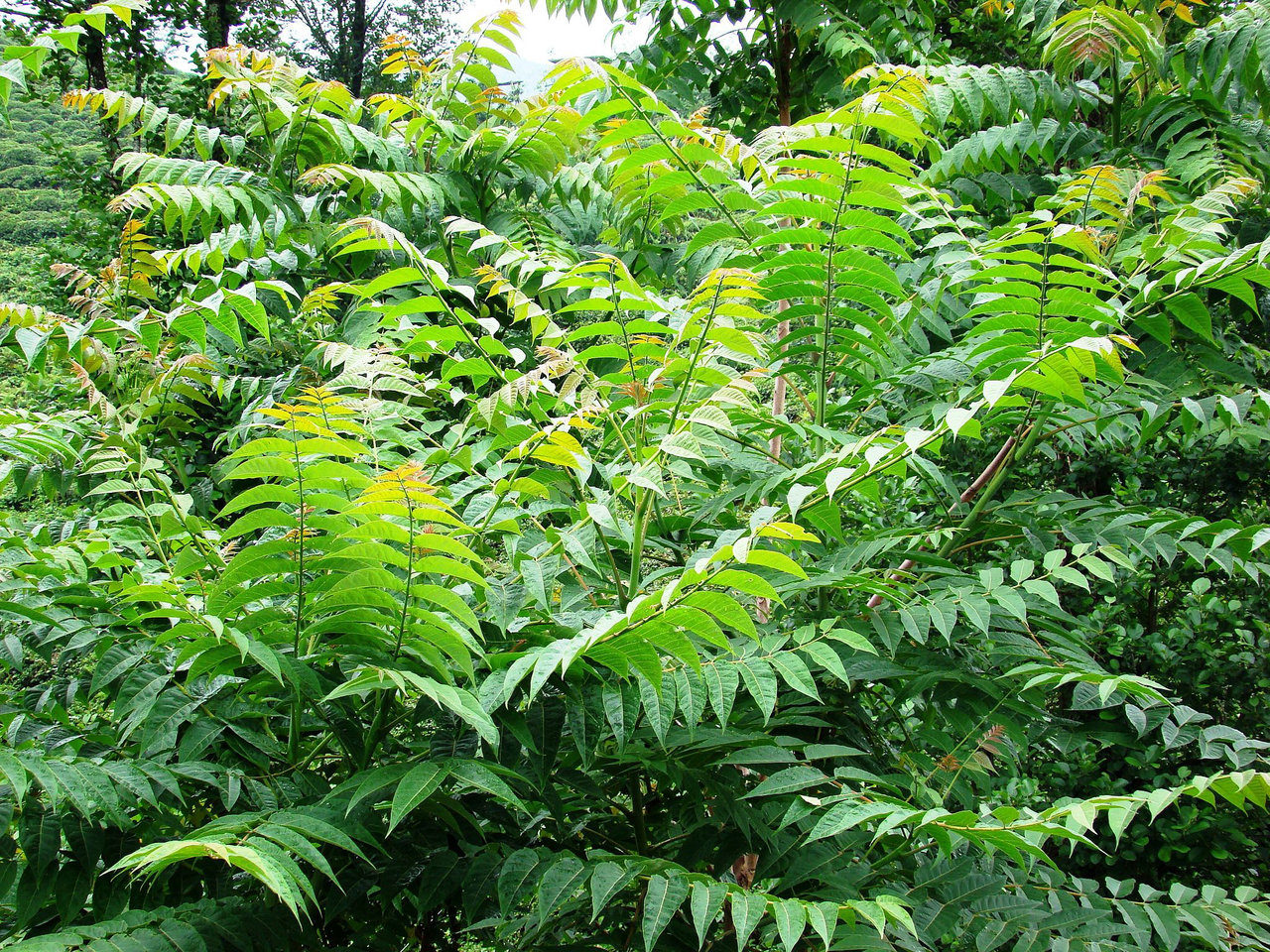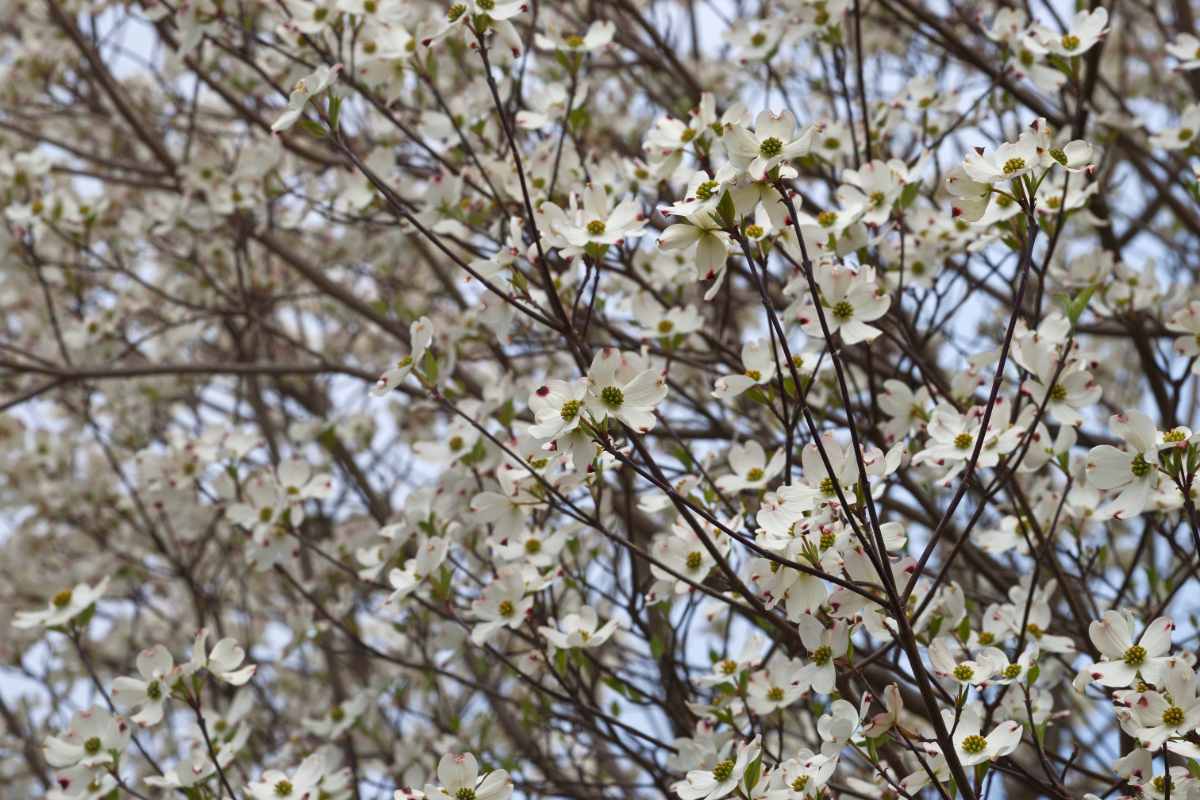
There’s a lot to love about living in Missouri. You probably already feel proud to be a Missourian because of the down-to-earth midwestern lifestyle. Give yourself one more thing to be proud of and discover the best trees to plant in Missouri to make your lawn stand out.
Planting native trees ensures your tree thrives in its ideal environment, keeping your lawn looking great. In Missouri, you need trees that can survive various temperatures and planting conditions. Below, we break down 10 of the best trees for Missouri, including the flowering dogwood — Missouri’s state tree.
- Best Trees for Your Missouri Landscape
- 1. Red Maple (Acer rubrum)
- 2. Eastern Redbud (Cercis canadensis)
- 3. Pecan (Carya illinoinenis)
- 4. Flowering Dogwood (Cornus florida)
- 5. Persimmon (Diospyros virginiana)
- 6. River Birch (Betula nigra)
- 7. Red Mulberry (Morus rubra)
- 8. American Sycamore (Platanus occidentalis)
- 9. Willow Oak (Quercus phellos)
- 10. Sugar Maple (Acer saccharum)
- What Makes a Tree Thrive in Missouri?
- FAQ About Missouri Trees
Best Trees for Your Missouri Landscape
1. Red Maple (Acer rubrum)
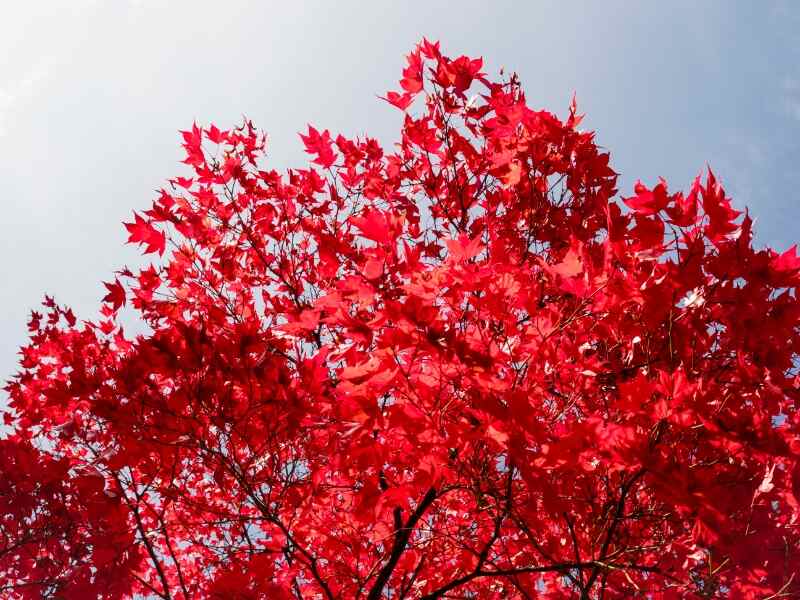
Red maple is a large ornamental tree named for its vibrant autumn foliage. It also develops small red flowers and fruit called samaras. Red maple grows quickly in well-drained soils and may grow faster than other types of maples. It has low drought tolerance and is extremely cold hardy.
This tree is one of the first to announce the arrival of fall with its red leaves, making it an excellent choice for those looking to add a splash of color to their landscape. In addition, despite not being the main source of maple syrup in the country, the red maple does contribute to syrup production, so imagine having that in your own backyard!
USDA Hardiness Zone: 3-9
Sun: Full sun, partial shade
Soil: Moist, slightly acidic soils
Duration: Perennial
Bloom time: March through April
Water use: High
Mature height: 60 to 90 feet
Potential hazards: Leaves and bark are poisonous to livestock
Maintenance: Low
2. Eastern Redbud (Cercis canadensis)
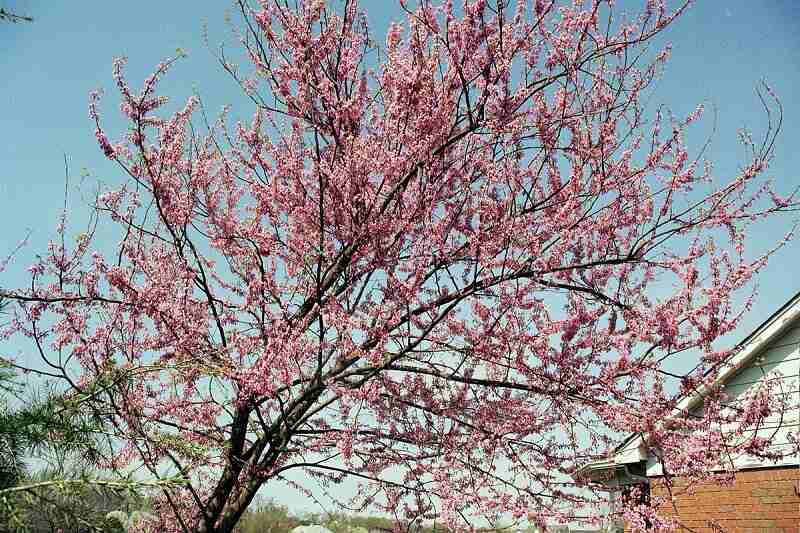
Eastern redbud is an ornamental tree in the pea family that grows rapidly. While it can withstand sun and shade, it requires frequent maintenance to keep it vigorous, like pruning and fertilization. In spring, clusters of light purple or pink flowers appear.
Planting this tree is a great choice for anyone looking to build a pollinator garden, as its nectar-rich flowers attract bees and butterflies. Beyond these pollinators, the eastern redbud produces bean pod fruits, which invite songbirds to your landscape.
USDA Hardiness Zone: 4-9
Sun: Full sun, partial shade
Soil: Moist, well-draining, and nutrient-rich
Duration: Perennial
Bloom time: March through May
Water use: Low
Mature height: 20 to 30 feet
Potential hazards: No toxic effects, but the branches tend to break
Maintenance: Moderate
3. Pecan (Carya illinoinenis)
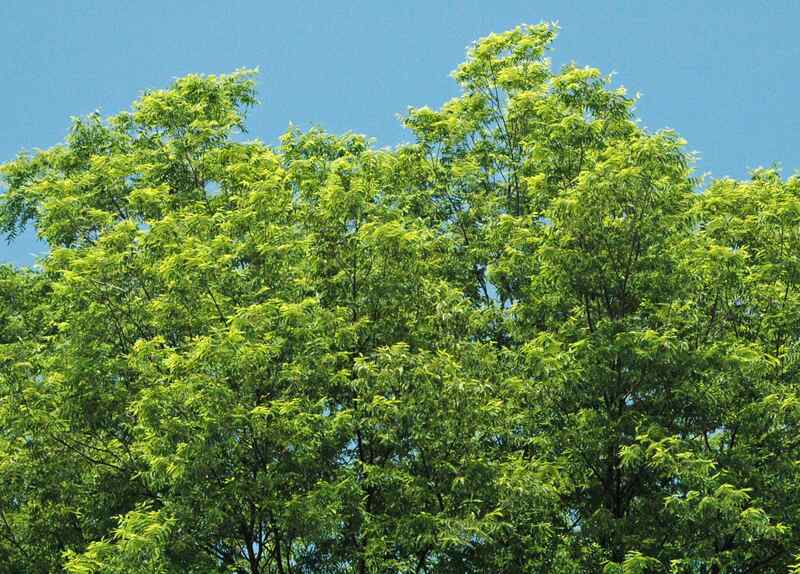
Pecan trees are a species of hickory whose seed can be harvested and enjoyed. The largest of the hickory species, this tree is known for its giant trunk and reaching heights of 100 feet. Pecan trees can weather various soil conditions, and they are known to endure drought. Pecan wood is commonly found in furniture and flooring.
The pecan tree also serves a practical purpose through its nut production — you can pick pecans in your own backyard for a delicious pecan pie. In addition, its sprawling shade canopy makes it an ideal choice for large properties looking for a natural shaded retreat.
USDA Hardiness Zone: 5-9
Sun: Full sun, partial shade
Soil: Rich, moist, well-drained soils
Duration: Perennial
Bloom time: March through May
Water use: High
Mature height: 70 to 100 feet
Potential hazards: No toxic effects
Maintenance: Moderate
4. Flowering Dogwood (Cornus florida)
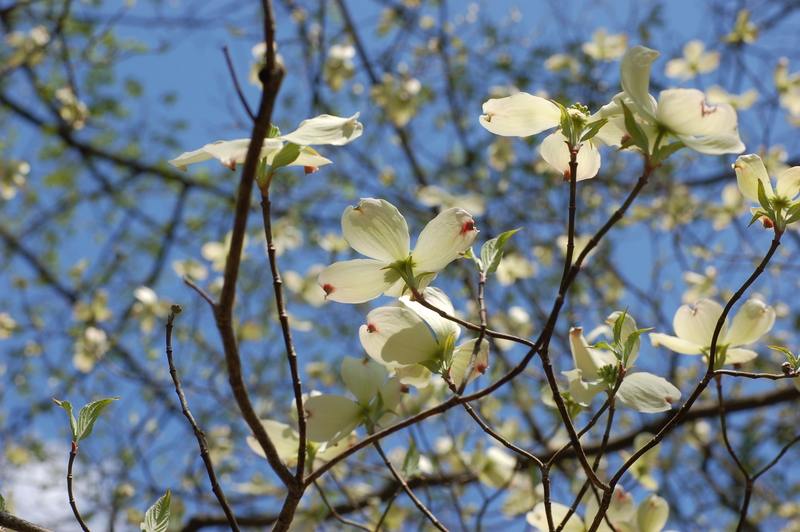
Photo Credit: Ram-Man / Wikimedia Commons / CC BY-SA 2.5
Flowering dogwood, Missouri’s state tree, is a picturesque single or multi-trunked tree. This understory tree grows white, pink, or yellow flowers in spring, bringing color to any landscape. As the seasons turn, its foliage shifts to scarlet. Once established, this flowering dogwood handles heat well and prefers well-drained soils.
Adding to its charm, the flowering dogwood is a beacon for biodiversity. Pollinators like to visit the flowers, and if you’re looking to attract birds to your yard, this tree’s red fruits provide a feast for them.
USDA Hardiness Zone: 5-9
Sun: Partial shade, but tolerates full sun
Soil: Well-drained soils, high in organic matter
Duration: Perennial
Bloom time: March through June
Water use: Low
Mature height: 15 to 25 feet
Potential hazards: Contact with this tree may cause skin irritation
Maintenance: Low
5. Persimmon (Diospyros virginiana)
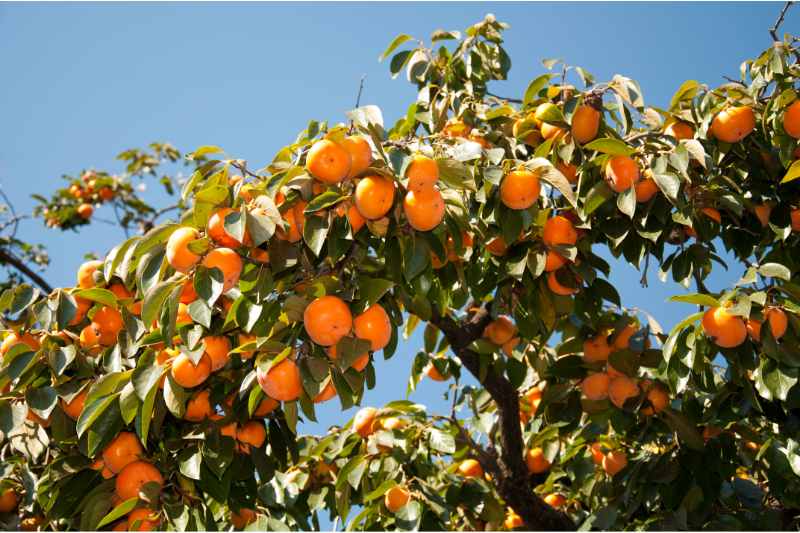
The persimmon tree is best known for its sweet orange fruit that appears in fall. This fruit attracts wildlife and can be incorporated into various foods and beverages. Because persimmons are dioecious, male and female trees are needed to produce fruit. Also, yellow bell-shaped flowers bloom in spring.
A good thing about this tree is that it is low maintenance, with one minor caveat: the cleanup. Fallen fruit can create a mess on lawns and walkways, needing timely removal to prevent them from turning into slippery hazards.
USDA Hardiness Zone: 4-9
Sun: Partial shade
Soil: Prefers moist soil, but tolerates dry, nutrient-poor soils
Duration: Perennial
Bloom time: March through June
Water use: Medium
Mature height: 30 to 80 feet
Potential hazards: Seeds can be harmful to pets if eaten
Maintenance: Low
6. River Birch (Betula nigra)
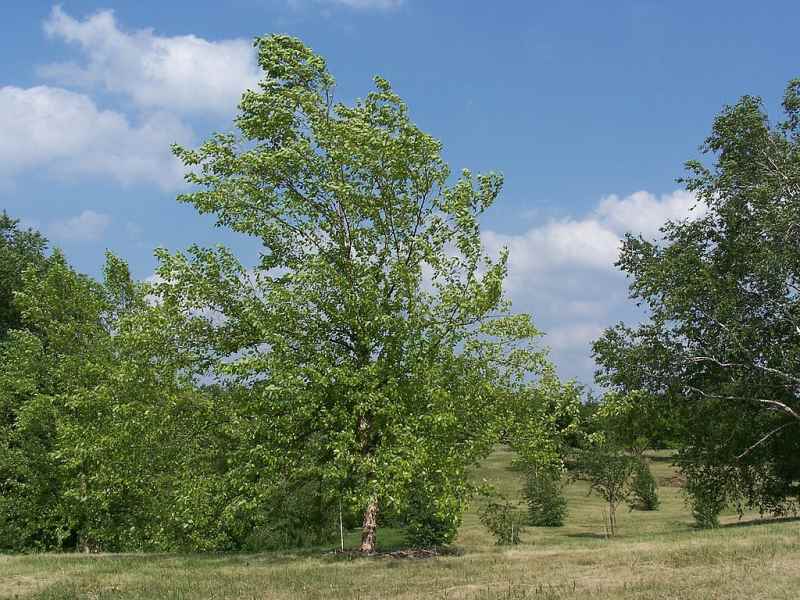
River birch is a sizable, multi-trunked tree with yellow autumn foliage. This tree prefers wet soils and can withstand flood conditions for long periods. Regular pruning is required in the early stages of growth to remove low branches that may block vehicles.
The river birch’s adaptability to wet conditions makes it a good choice for areas near water bodies, such as riverbanks and wetlands, or maybe your own rain garden. However, if this is not the case for your landscape, this tree may demand more attention, needing constant watering. It is not a “plant it and forget it” type of tree.
USDA Hardiness Zone: 4-9
Sun: Full sun, partial shade
Soil: Prefers moist soils with good drainage, acidic
Duration: Perennial
Bloom time: February through March
Water use: High
Mature height: 30 to 70 feet
Potential hazards: No toxic effects
Maintenance: Moderate
7. Red Mulberry (Morus rubra)
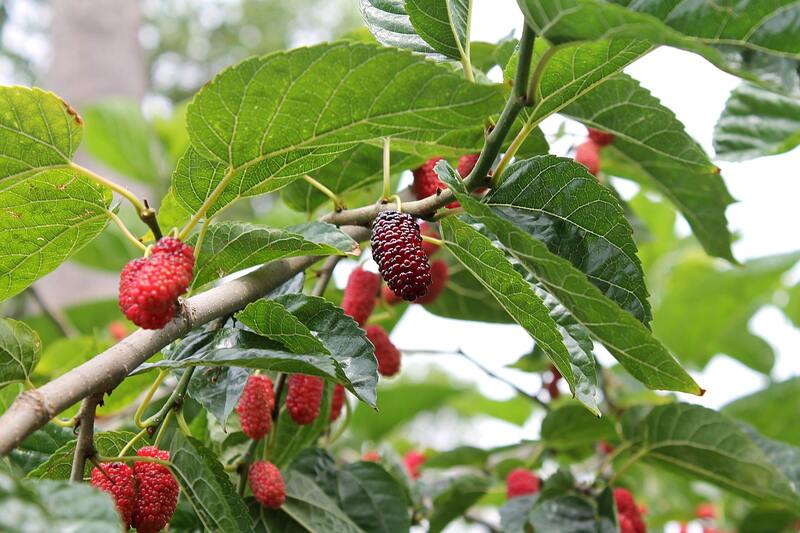
Red mulberry trees enjoy rich, moist soils and thrive in full sun. In autumn, the foliage becomes bright yellow. Their blackberry-like fruit is edible when ripe and is appreciated by birds. Red mulberry is exceptionally tolerant of drought conditions and also resists damage from deer.
One thing to note is that this tree’s fruit is poisonous when not fully ripe, so be careful if your yard is frequented by children and pets to prevent any untimely “sampling.” In addition, the mature fruit can leave stains on concrete walkways, patios, and even parked cars, so be mindful of where you’ll be planting the red mulberry.
USDA Hardiness Zone: 4-9
Sun: Full sun, partial shade
Soil: Prefers rich, moist, and well-drained soils
Duration: Perennial
Bloom time: March through August
Water use: Medium
Mature height: 25 to 60 feet
Potential hazards: Low toxicity if unripe fruit or sap is ingested and may cause contact dermatitis
Maintenance: Moderate
8. American Sycamore (Platanus occidentalis)
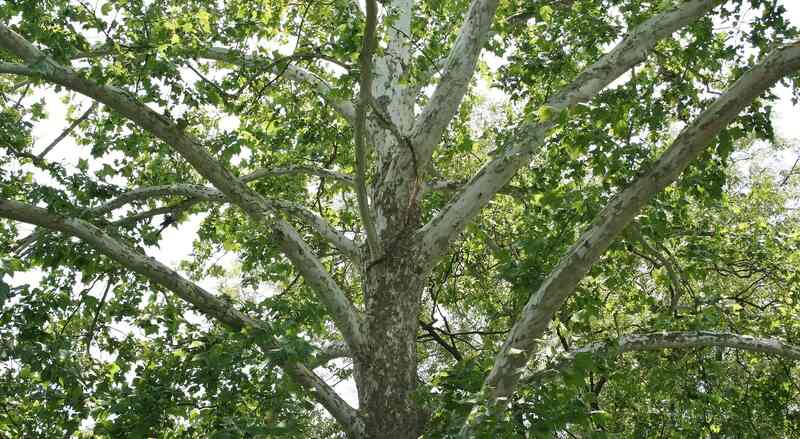
American sycamore is a shade tree that produces clusters of tiny flowers in spring and round fruits that last through December. The sap can be made into a beverage or syrup, while the wood is often used in furniture. American sycamores can endure various soil types but are fond of moist soils and full sun. While this tree attracts birds, it is resistant to browsing by deer.
The American sycamore stands out as one of the largest trees featured on our list, making it an excellent choice for those with ample space and in search of a shade tree. However, this tree is known for shedding twigs and fruit, so be prepared for the maintenance involved in keeping the area tidy.
USDA Hardiness Zone: 4-9
Sun: Full sun
Soil: Prefers moist soils with good drainage
Duration: Perennial
Bloom time: March through April
Water use: High
Mature height: 75 to 100 feet
Potential hazards: No toxic effects
Maintenance: High
9. Willow Oak (Quercus phellos)
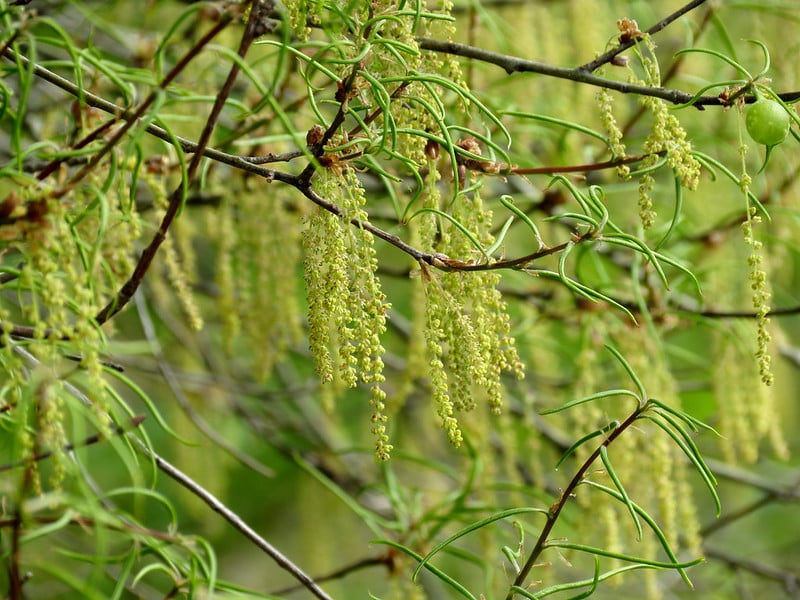
Photo Credit: Katja Schulz / Flickr / CC BY 2.0.
The willow oak is a large tree with dense, willow-like leaves that make it an ideal shade tree. Willow oak has bright yellow autumn foliage. It attracts beneficial insects and squirrels but is toxic to horses. This tree transplants well and can withstand urban pollution.
In Missouri, the willow oak is commonly found in areas near swamps or poorly drained lowlands. It is a highly adaptable tree, making it a robust addition to landscapes in need of shade and aesthetic appeal.
USDA Hardiness Zone: 5-9
Sun: Full sun, partial shade
Soil: Wet, well-drained soils, acidic
Duration: Perennial
Bloom time: March through May
Water use: High
Mature height: 40 to 75 feet
Potential hazards: Low toxicity when eaten; toxic to horses
Maintenance: Low
10. Sugar Maple (Acer saccharum)
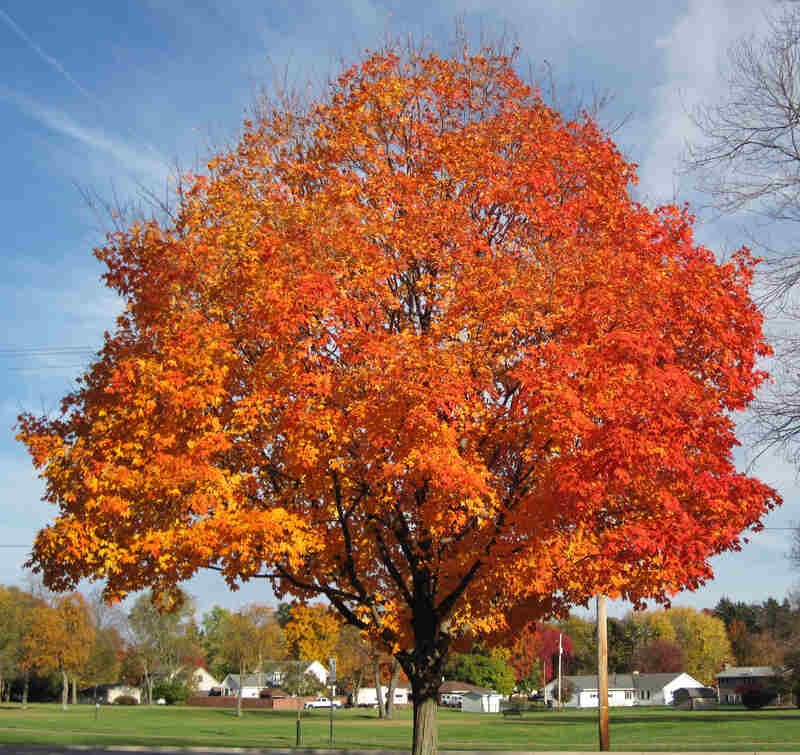
Sugar maples are large shade trees whose leaves turn a vibrant range of reds, oranges, and yellows. This tree is best recognized as the iconic maple leaf on the Canadian flag and the national tree of Canada. Drooping yellow flowers appear on the sugar maple in spring. The sap from sugar maple trees is collected and used for syrup production.
In addition, sugar maple’s limbs are strong and usually resilient against wind damage, which makes them ideal for windy cities throughout Missouri, like Kansas City.
USDA Hardiness Zone: 3-8
Sun: Full sun, partial shade
Soil: Moist, well-drained, slightly acidic soils
Duration: Perennial
Bloom time: April through May
Water use: Medium
Mature height: 40 to 120 feet
Potential hazards: No toxic effects
Maintenance: Moderate
What Makes a Tree Thrive in Missouri?
In Missouri, there are four regions that vary based on soil and climate. The Ozark region is mainly pastures and forests with rocky soil. The river-border area is highly fertile, and the trees enjoy wet soil. The southeast lowlands region is a collection of flat lowlands with rich soil. Meanwhile, the northern and western prairies have less favorable tree growth than other areas.
Each region has different soil conditions, meaning some trees will grow better than others in certain areas. Some trees, such as sugar maple, can be found statewide. However, trees like willow oak may only be found in the Missouri Bootheel or the southeast lowlands region.
Understanding the specific region of Missouri you reside in is crucial in selecting the right tree for your landscape. In addition, you’ll also have to consider your personal needs and the intended purpose of the trees. Here are some key factors to keep in mind:
- Maintenance: How much time and effort are you willing to invest in tree care? Some species require more watering, pruning, and cleanup than others.
- Sunlight: Does your yard benefit from full sun, or is it predominantly shaded? Some trees will tolerate partial shade, while others prefer full sun settings. The same goes for the best grass types for Missouri — some will tolerate partial shade, but most will thrive in full sun.
- Purpose: Are you looking for ornamental beauty, shade, or perhaps a habitat for wildlife? Decide on the primary role you want the tree to play.
- Space: Account for the mature size of the tree to ensure it fits well in your available space without overcrowding.
The same applies to the landscaping plants in your Missouri yard. Always choose the ones best adapted to your region, and more in sync with your personal preferences.
FAQ About Missouri Trees
Which Trees Have the Longest Bloom Time in Missouri?
Out of the best trees to plant in Missouri listed here, the following have the longest bloom time:
- Flowering dogwood (4 months)
- Persimmon (4 months)
- Red mulberry (6 months)
What are the Best Trees for Water Conservation in Missouri?
The best trees for water conservation in Missouri are the eastern redbud and the flowering dogwood, both of which require little water. To learn more about dealing with trees during drought, here’s a link to an informative article:
Are There Dangerous Trees in Missouri?
Yes, some trees in Missouri can pose risks due to their toxicity or other hazardous characteristics. Here’s an overview of trees that could be considered dangerous in Missouri:
- Red maple: Poisonous to livestock
- Red mulberry: The unripe fruit and sap are toxic.
- Willow oak: Toxic when eaten, especially to horses
- Eastern redbud: Can become dangerous during storms, since its branches tend to break
- Persimmon: The persimmon seed can cause intestinal blockage in dogs if eaten.
When to Call the Pros
Each of these common Missouri trees has features that make them appropriate for specific regional conditions. Missouri homeowners should choose trees that fit their preferred maintenance and watering requirements.
Trees are a great way to incorporate shade, colorful spring flowers, and autumn foliage into your yard. You can also enhance your Missouri lawn by incorporating native plants such as shrubs and flowers. Talk to a Missouri landscaping expert if you need help selecting plants for your landscape. Whether you’re in Kansas City, St. Louis, Springfield – or anywhere else in the great state of Missouri – LawnStarter can connect you with passionate lawn care and landscaping pros with helpful advice.
Main Image Credit: nickkurzenko / Canva Pro / License

